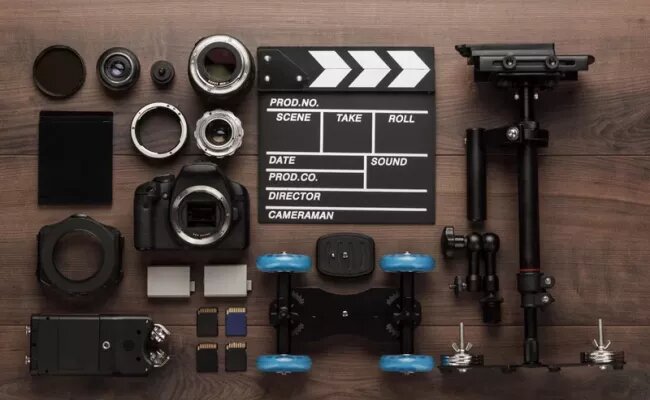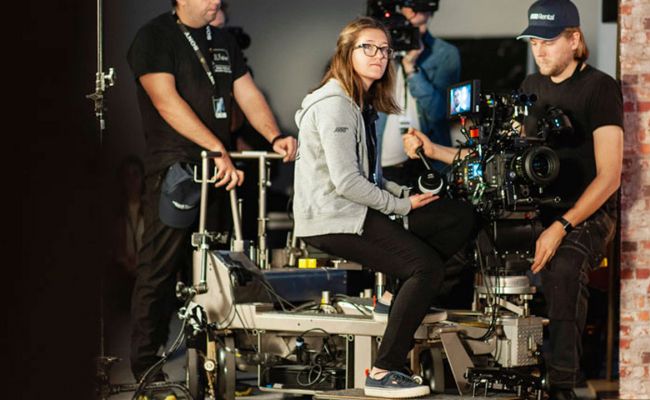- A good idea makes for a significantly more uncomplicated manufacturing process in any form of creative activity.
- Larger projects will frequently necessitate the hiring of a specialized production manager for this step of the process.
- Ideally, you should stick to the schedule (and budget) that you established during the pre-production stage.
- If you have done everything perfectly, your production staff will have prepared each site in advance and set up props in their initial positions.
As a beginner in the sector, you won’t need to dedicate much effort to each of these processes. You should still be aware of each stage, though, since this knowledge will aid guide you as you gain experience and seek to enhance the quality of your movies.
Table of Contents
Development
This is almost always the shortest and easiest part of the task, but it doesn’t mean you should ignore it.
A good idea makes for a significantly more uncomplicated manufacturing process in any form of creative activity.
In the film industry, the development phase often consists of preparing the blueprint for a whole script – it might be an original production or based on an existing tale, book, or even a previous film.

The director will finally sign off on the storyboards and outlines, regardless of the source material, before collaborating with one or more writers to construct a thorough blueprint for each act.
This stage is usually completed when the plot of the film has been fully fleshed out.
Pre-Production
Moving on from development work requires you to start thinking about things like how much money you have to spend – this one number will decide multiple things, including who will appear in your cast, how many crewmembers you can afford to recruit, and what equipment you will be able to use.
Larger projects will frequently necessitate the hiring of a specialized production manager for this step of the process.
This individual will be in charge of handling the money, making a timeline, and planning the shooting locations.
Permits will be required, contracts will need to be written out and signed, and planning for the project’s subsequent stages will be necessary.
Production
Many inexperienced filmmakers will be accustomed to starting here and dealing with obstacles as they occur.
That may be a reasonable method for small tasks, but the lack of planning will become apparent to everyone if you start involving more people in your work.
Because you will most likely be shooting video on most of your production days, the production phase will frequently blend with the photography phase.
Ideally, you should stick to the schedule (and budget) that you established during the pre-production stage.
Photography
This is where things start to get serious: you’re finally filming the video, which means you’ll need your actors and production crew on-site at all times.
If you have done everything perfectly, your production staff will have prepared each site in advance and set up props in their initial positions.
Making sure that you have all of the necessary equipment and personnel for the next day’s work is critical to your success during the photography phase – if your production team has planned everything correctly for you, the amount of time where you require the most expensive cast members and recording equipment on-site will be minimal.
The better your planning, the easier things will go.
Wrap
Before you send your actors home and return the cameras, lighting, and sound equipment to your providers, you must ensure that you have everything you need for the shoot.
Before deconstructing sets and disassembling props, double-check that you have everything you need – there is no going back once the wrap is complete.
Make and keep an inventory during the production and photography stages if you don’t want to be charged for missing or damaged props or recording equipment.
Make several backups of all of your source material before giving your staff the green light to complete the production sites.
Post-Production
The more complex your project, the more involved (and expensive!) your post-production phase must be.
Any scenes taken in front of a blue screen will require compositing with the backdrops shot on film, and the longer your project, the more difficult it will be to keep things consistent throughout the run-length.
Sound effects and music will also need to be added to your video, which may need the hiring of a full team of trained and experienced post-production professionals.
Start with a rough cut, then establish goals for each succeeding pass until you have a final draft that you are happy with – the so-called “golden sample,” or master.
Distribution
When you’ve created your latest work, it’s time to put it on display for your audience!
Also Read:
This is how you recoup the money you spent on the previous stages, which is why it is critical to be realistic about your budget throughout the initial stages of your project.
Making a picture for theatrical distribution may be your ultimate objective, but don’t expect to get there fast.
Target the smaller, free-to-use streaming providers initially, establish a significant subscriber base, and if you make it that far…
What’s holding you back from approaching “big” streaming services like Amazon, Netflix, or HBO Max?
After you’ve learned about the seven stages of professional filmmaking, ask yourself, “Could I improve my existing projects by implementing a more professional production process?”




